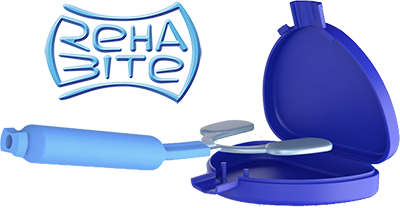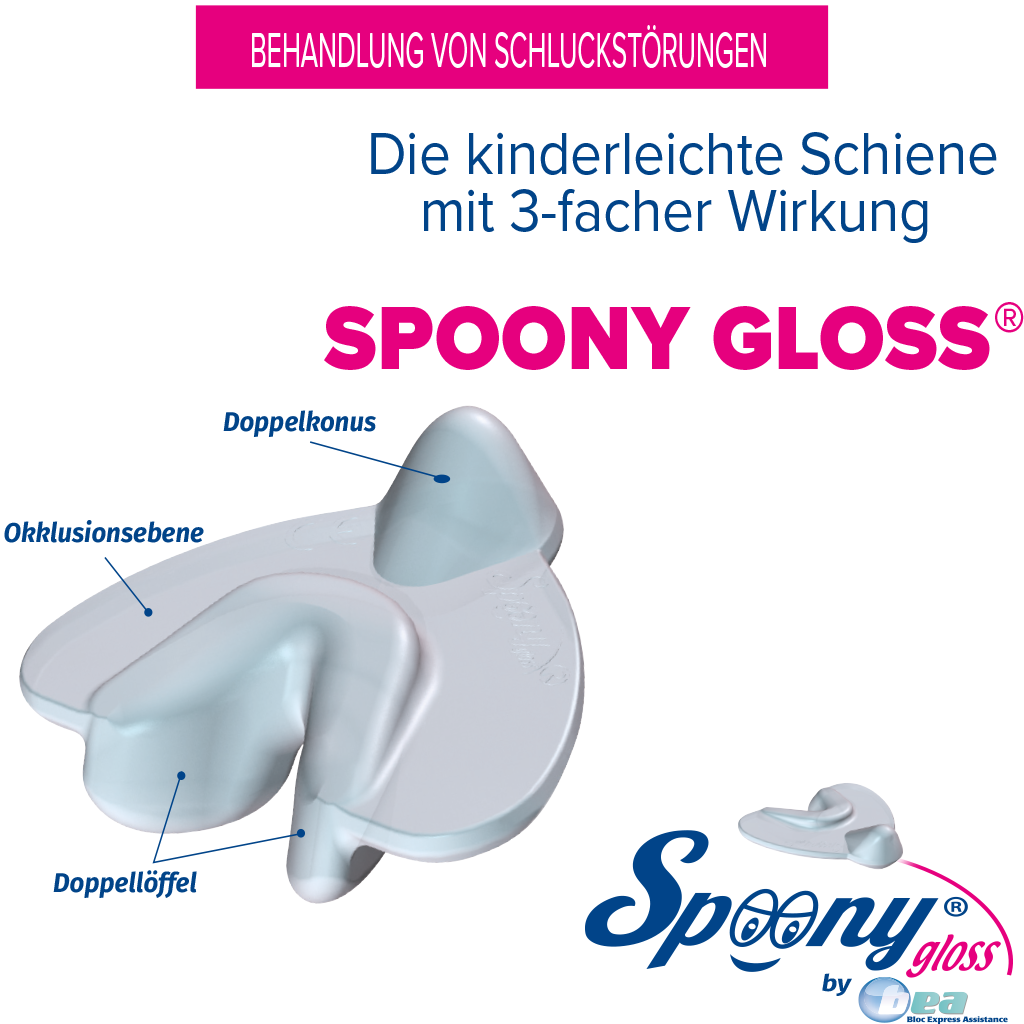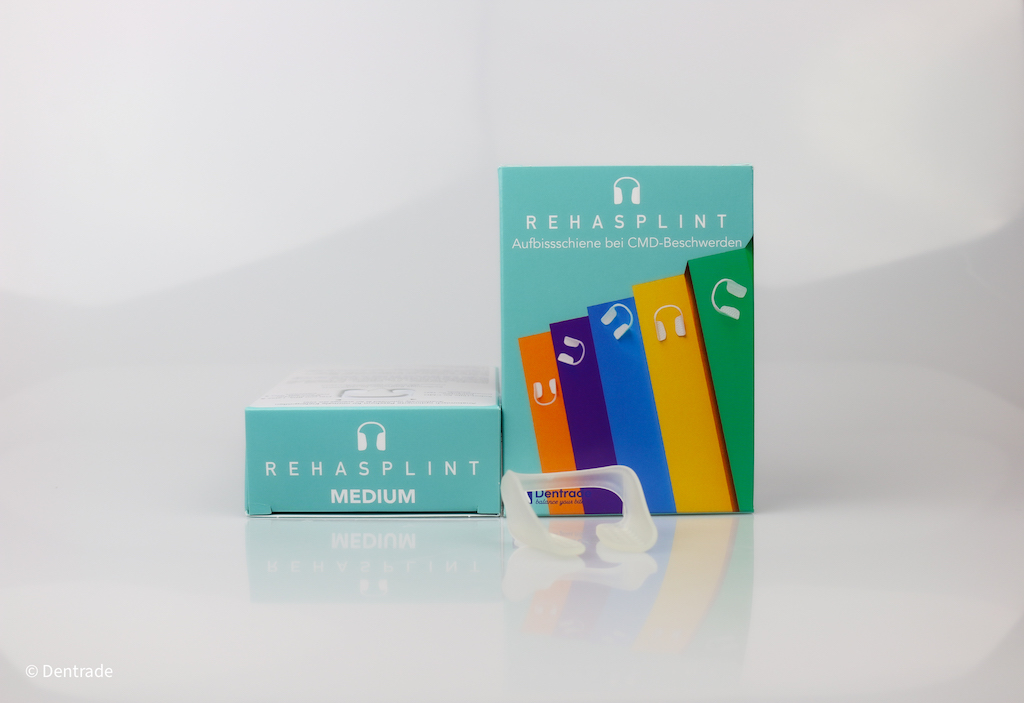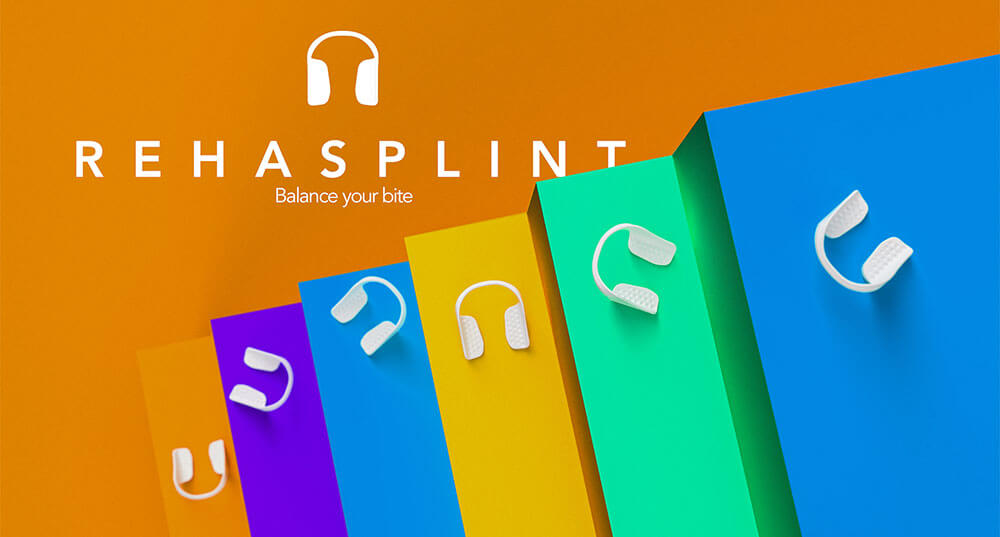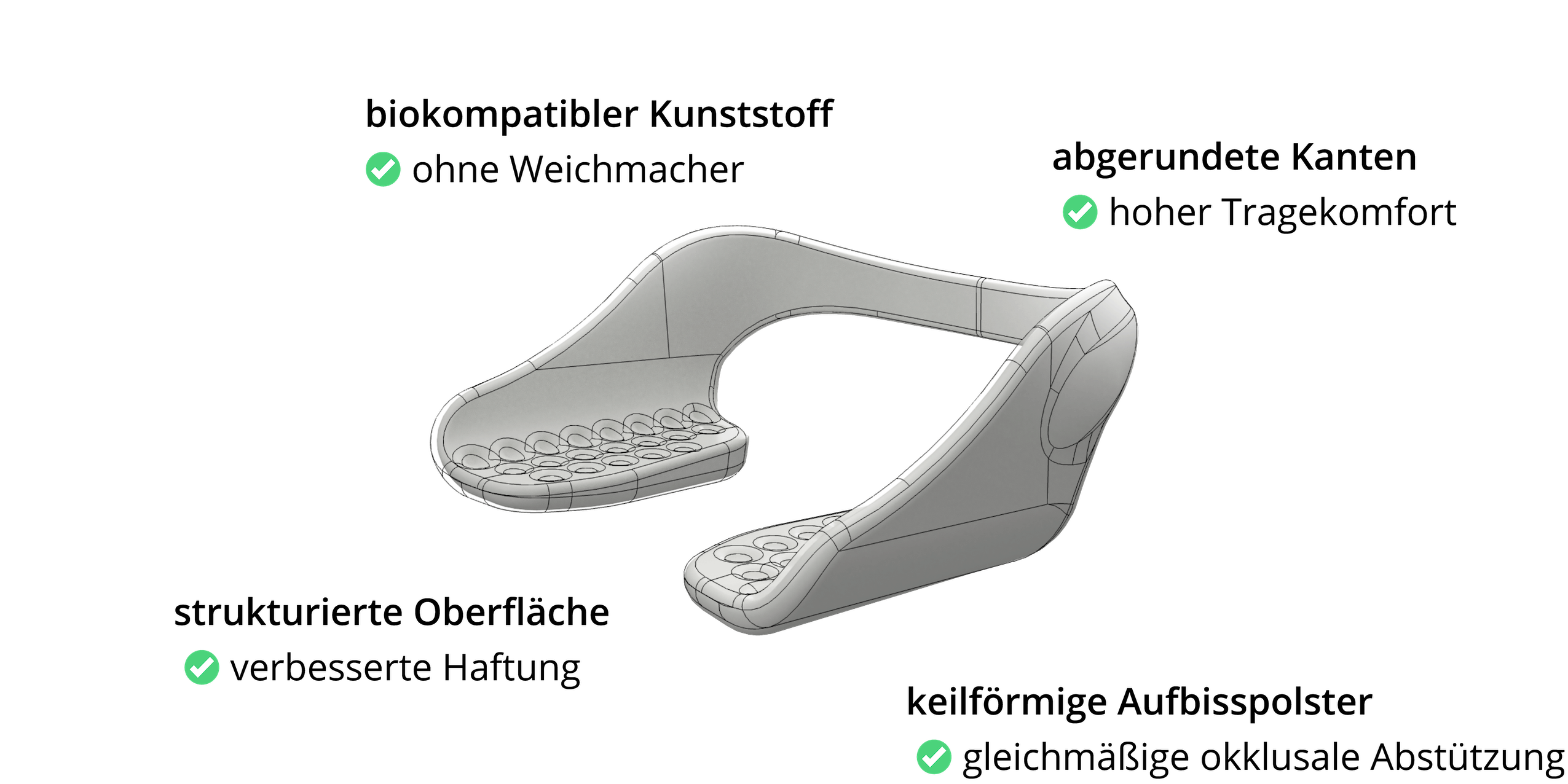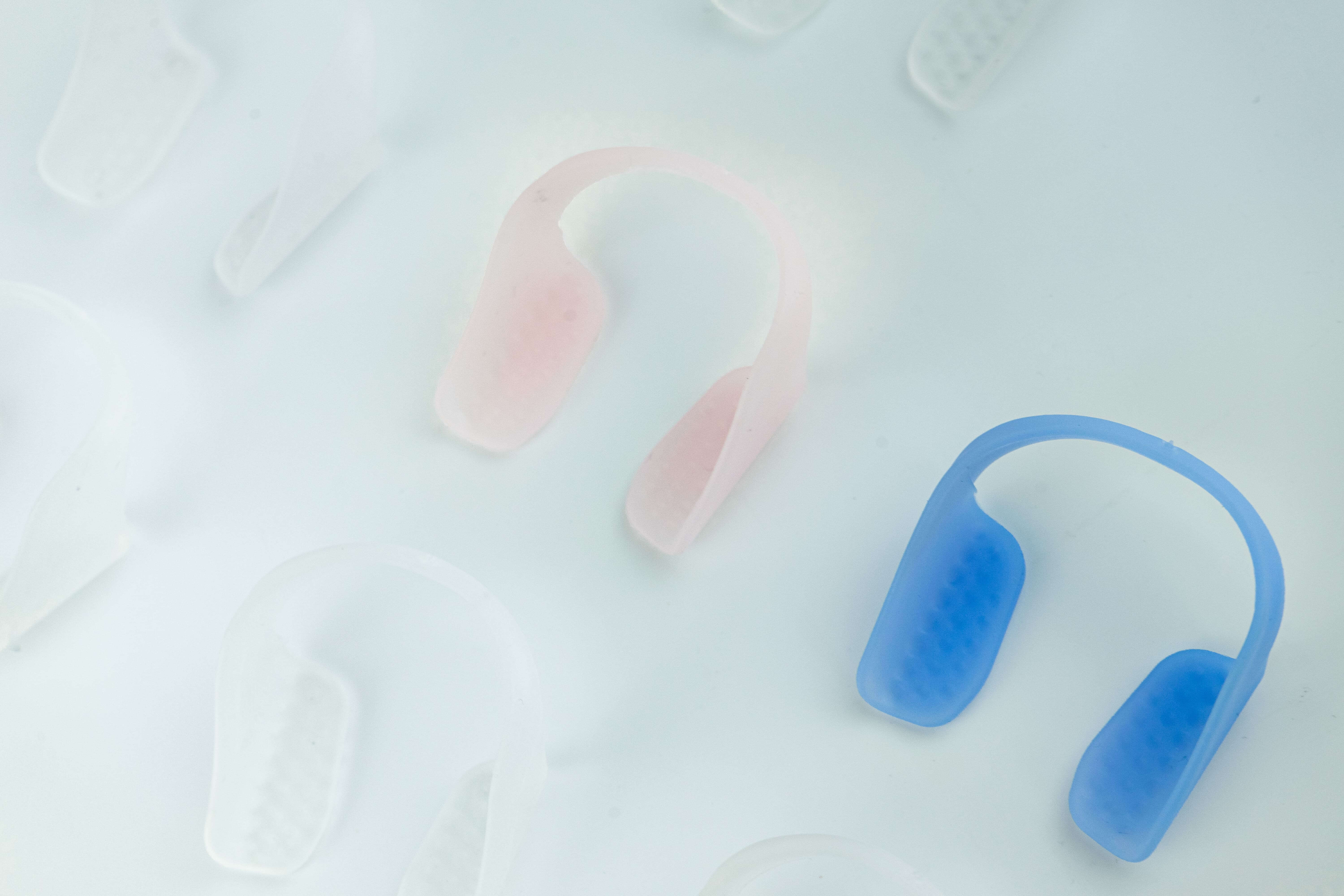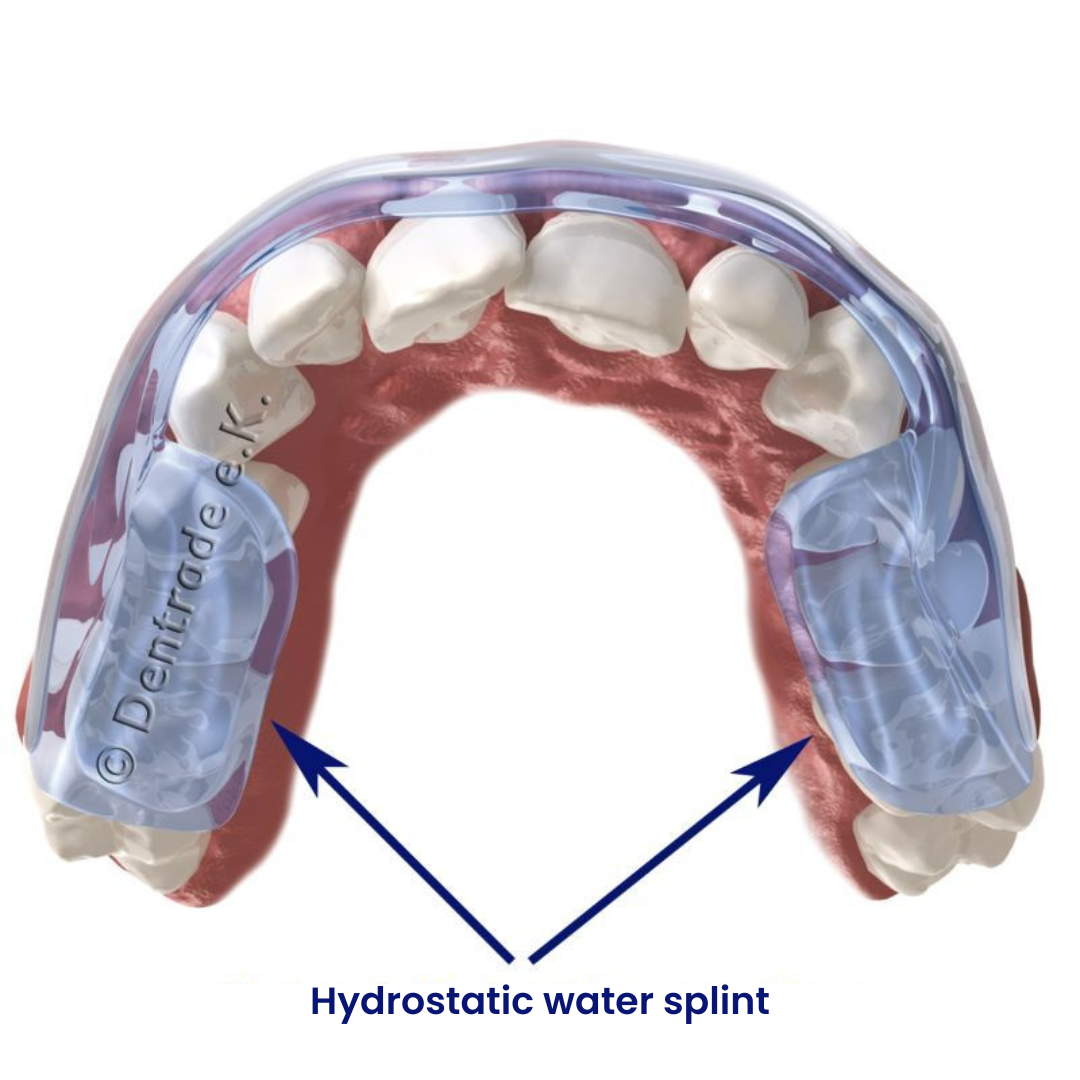
Aqualizer The Instant Help Splint
The water-filled relaxation splint for diagnosis of TMD syndrome
The Aqualizer is a temporary, disposable diagnostic splint used for relief, diagnosis and treatment of TMD. The water in the Aqualizer will balance and equilibrate the patient’s occlusion giving them fast relief in most cases.
The Aqualizer consists of water-filled bite pads connected by a thin capillary. The splint reacts dynamically and permanently with the help of the water to distribute the chewing pressure evenly. Both sides of the jaw are balanced as in a waterbed. This principle is called "the hydrostatic principle".
Just four steps to your instant help splint
Select Aqualizer
Choose from different payment options
Daily shipping
Controls TMJ pain
Treatment of TMD
Exclusive EU importer of the Aqualizer
Relief of head, jaw and neck pain
Cooperation with leading TMD experts
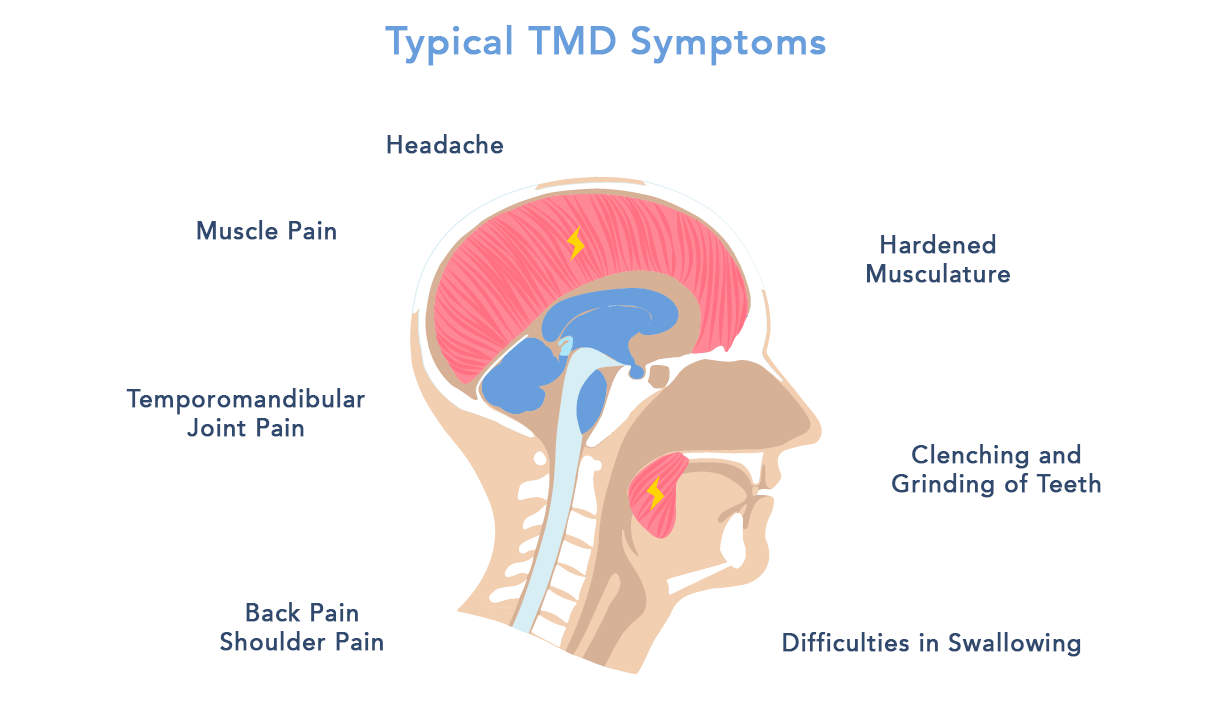
The TMD Syndrome
Temporomandibular joint dysfunction in a nutshell
Temporomandibular joint dysfunction in a nutshell Carnio mandibular dysfunction, or CMD for short, is a temporomandibular joint syndrome that is usually caused by grinding or clenching of the teeth and can lead to associated pain in a variety of areas. Due to the misalignment of the jaw muscles, TMD syndrome causes a variety of symptoms beyond jaw pain that are not normally associated with the TMJ. Typical TMD symptom include: Tension headaches, jaw clicking, back pain, difficulty swallowing, light hypersensitivity, neck tension ...
New bite splint for CMD complaints: the RehaSplint
The new RehaSplint bite splint from Dentrade protects your enamel and teeth from harmful abrasion during pressing and grinding. The occlusal splint relieves adapted restraints of your lower jaw or compensates for early occlusal contacts. It is available in a practical one-size-fits-all and relieves TMD complaints from the very first use. The RehaSplint is available in three different designs:
The new grinding splint can be worn both during the day and at night and can be shortened independently as required. The RehaSplint can be used for various symptoms, complaints and clinical pictures, for example:
- Occlusal disorders
- Bruxism (teeth grinding or clenching)
- Muscular imbalances
- Tension due to relieving postures
- TMD complaints
There are three different Aqualizer models: Aqualizer Slim, Aqualizer Ultra and Aqualizer Mini.
The Aqualizer Slim is slim shaped with improved comfort. The side wings are shorter. This reduces irritation of the tongue and gum and is suitable for more sensitive patients. The Aqualizer Ultra has slightly wider side wings. It is used for average sized mouths. Because of the wider fit and wider side wings, this model can be worn in combination with brackets during orthodontic treatment.
The Aqualizer Mini is suitable for children, youth, small-sized jaws or when molar teeth are missing.
The Aqualizer comes in three different vertical dimensions (water fill levels) - High, Medium and Low, corresponding to a bite height of 3 mm, 2 mm and 1 mm.
High Volume (3 mm) are used when a patient has excessive freeway space or needs a greater vertical dimension to fill the space between the upper and lower occlusal surfaces (deep bites or over-closed patients).
Low Volume (1mm) are for patients with restricted opening, or sensitivity to anything in the mouth. The low volume Aqualizer is also indicated when using the neuromuscular bite registration technique.
The anterior teeth (front teeth) must not touch each other.
While wearing, the bite height of the Aqualizer decreases over the time.
Medium volume (2 mm) are used by most patients (90%). Almost all patients can use medium volume.
In addition to strong tension in the head, jaw and neck muscles, the following symptoms are typical:
- Tooth enamel abrasion
- Lesions in enamel - Wedge-shaped defects in enamel are often found on the dental neck
- Bites on the tongue
The Aqualizer and the RehaSplint differ significantly in their underlying system.
The Aqualizer uses the hydrostatic effect. It consists of water-filled bite pads that distribute the chewing pressure evenly and thus quickly relieve pain in most cases. The Aqualizer is shaped by wearing the splint and is available in three different versions with different water levels.
The RehaSplint grinding splint, on the other hand, is made of a pleasant, flexible and biocompatible plastic that leads to immediate relaxation and relief of the jaw joints. The rounded corners contribute to a high level of wearing comfort, even over longer periods of time. The bite pads of the RehaSplint are already pre-shaped and adapted to the jaw.
For individual adaptation to the patient, the RehaSplint offers three different degrees of hardness. If you suffer from severe bruxism, the RehaSplint is recommended.
No, all Dentrade products are made of standardized materials approved for medical applications. All materials comply with ISO 10993:1 (standard for biocompatibility for medical devices). The plasticizer bisphenol A is not used in any of the materials. The Aqualizer is filled with non-toxic distilled water.
The Aqualizer cannot be swallowed accidentally.
Order your Aqualizer now - starting from 22€
Wake up more relaxed already after the first night.
Order now
